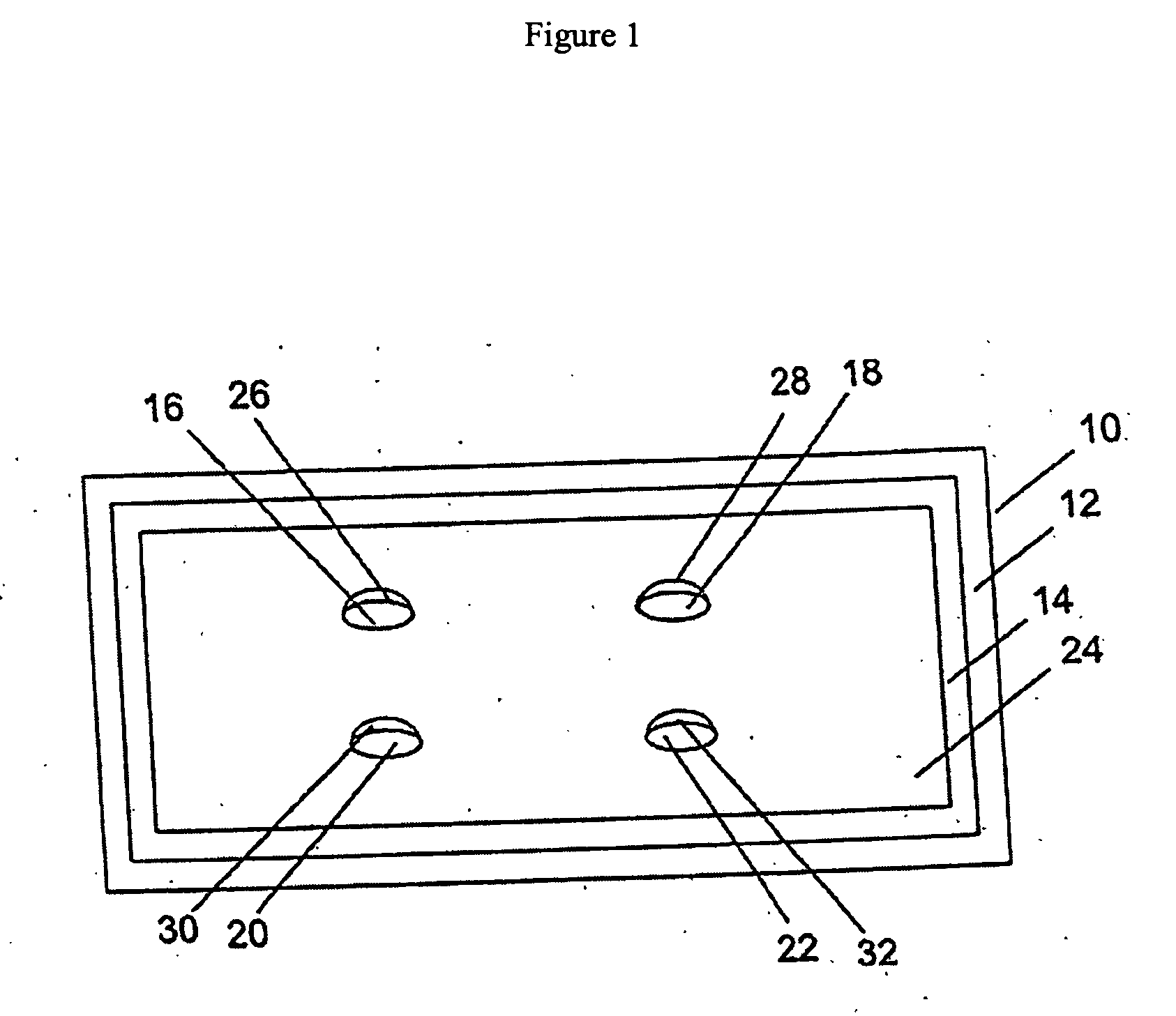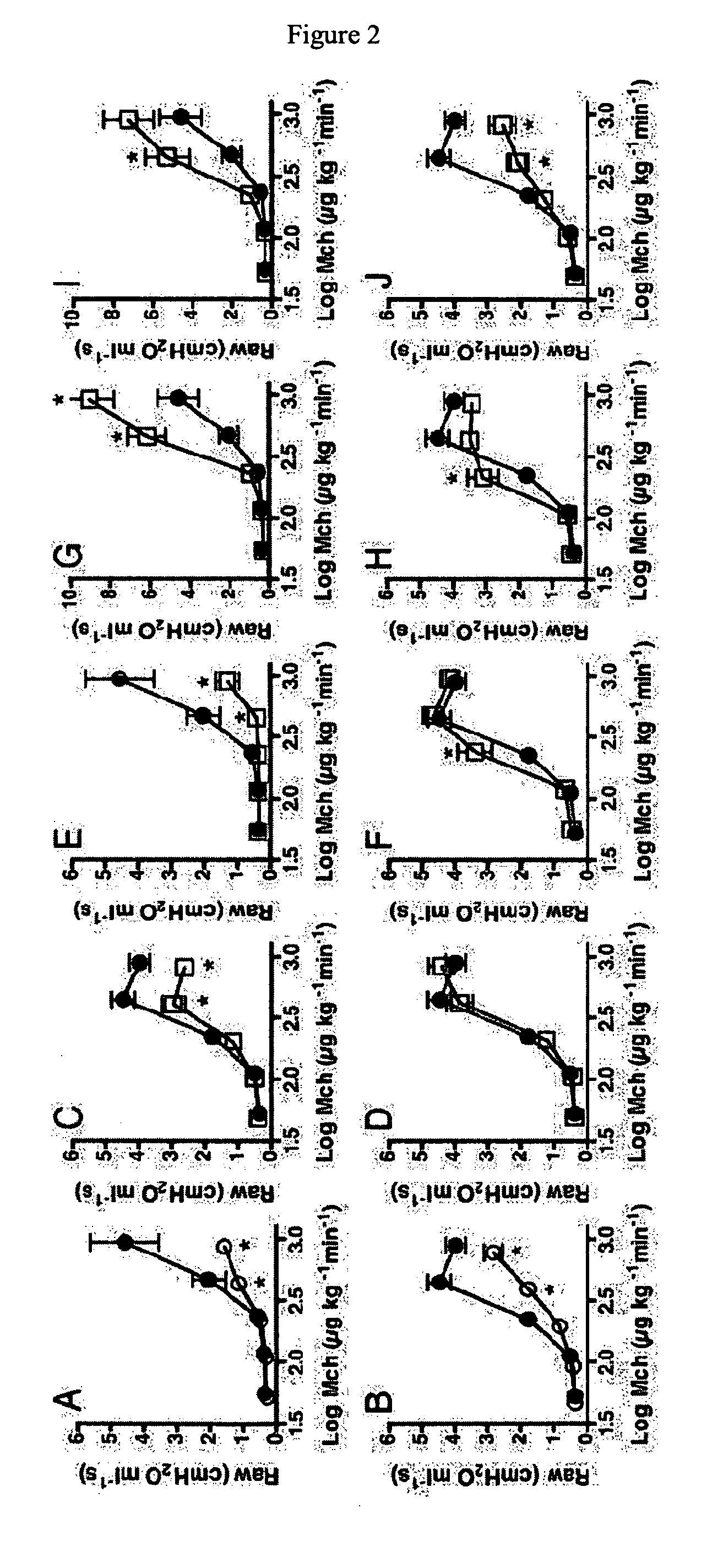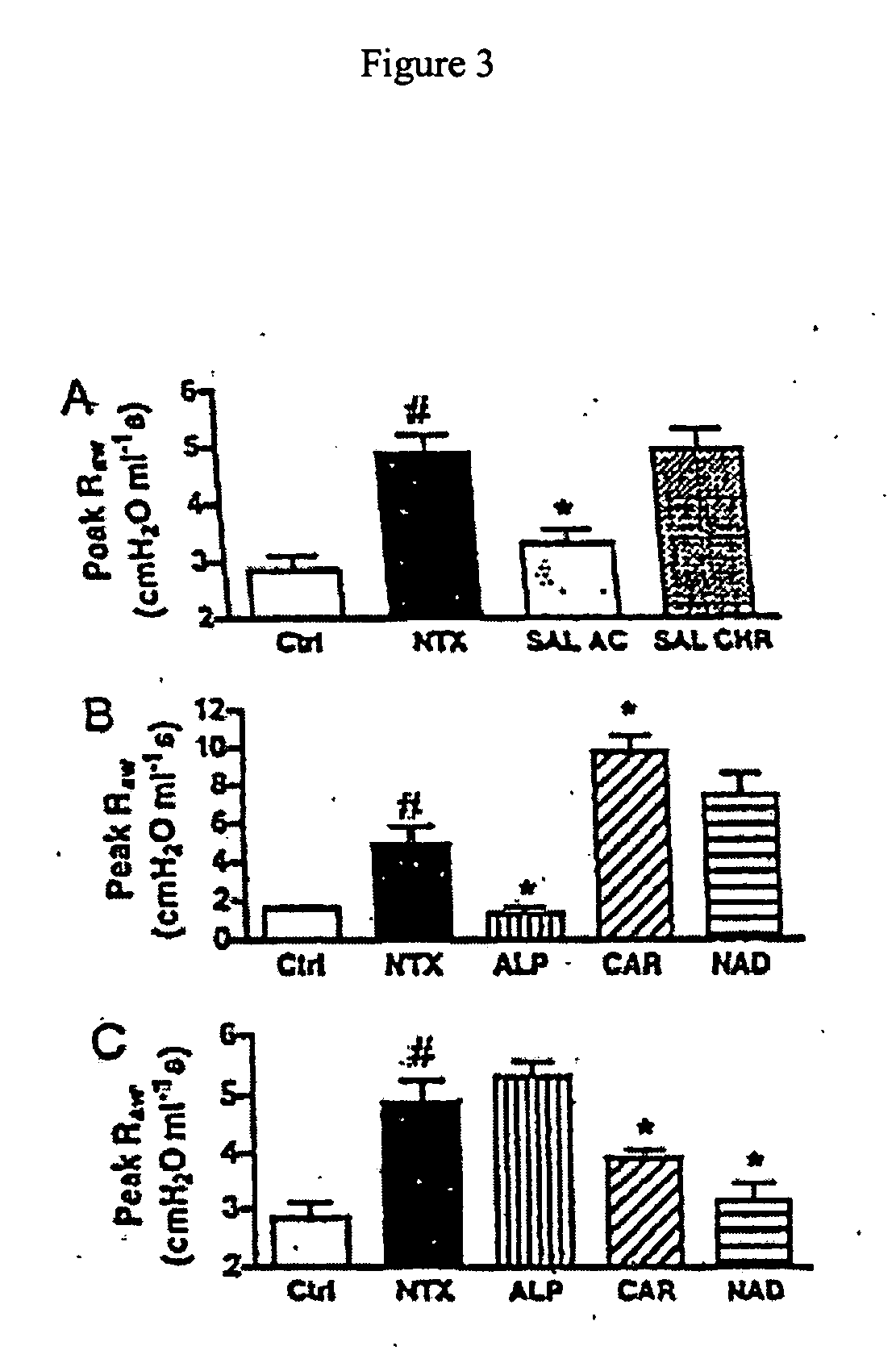Method of treating airway diseases with beta-adrenergic inverse agonists
a beta-adrenergic and inverse agonist technology, applied in the direction of biocide, drug composition, animal husbandry, etc., can solve the problems of copd patients obstructing airflow in the lungs, significant mortality and morbidity, and bronchial and bronchial ducts to lose their elasticity,
- Summary
- Abstract
- Description
- Claims
- Application Information
AI Technical Summary
Benefits of technology
Problems solved by technology
Method used
Image
Examples
example 1
Airway Resistance Reduction by Chronic Administration of β-Adrenergic Inverse Agonists
Methods
[0259] Balb / cJ mice aged 6 weeks (Jackson Animal Laboratory, Bar Harbor, Me.) were housed under specific pathogen-free conditions and fed a chicken ovalbumin-free diet. The Animal Research Ethics Boards of both the University of Houston and the Baylor College of Medicine approved all experiments reported here. The effects of administration of the non-selective β-adrenergic inverse agonists carvedilol (GlaxoSmithKline, King of Prussia, Pa.) and nadolol (Sigma Chemical, St. Louis, Mo.) and of salbutamol (Sigma Chemical, St. Louis, Mo.), a β2-adrenergic partial agonist, were examined in a murine model that exhibited cardinal features of human asthma, such as pulmonary eosinophilic inflammation, airway hyperresponsiveness, and heterogeneous airway narrowing. The results obtained in drug-treated animals were compared with those obtained in vehicle-treated counterparts (controls) in experiments...
example 2
Chronic Inverse Agonist Treatment Increases β-Adrenergic Receptor Numbers as Measured by Radioligand Binding
[0271]β2-adrenergic receptor numbers were measured in asthmatic mice as follows. Asthmatic mice (ovalbumin-challenged) were treated as follows: Ctrl, no drug treatment with methacholine challenge; salbutamol, a short-acting β2 agonist; carvedilol, a β1, β2 non-selective inverse agonist with α1-adrenergic antagonist activity; nadolol, a highly specific, hydrophilic β1, β2 non-selective inverse agonist; and alprenolol, a β-adrenergic antagonist. Drug treatments were either a single treatment 15 minutes prior to methacholine challenge or ongoing for 28 days (salbutamol was delivered continuously via a subcutaneous osmotic minipump and alprenolol, carvedilol, and nadolol were in animal chow). Mice were sacrificed and lung membranes were isolated as follows. Frozen lung tissue was homogenized in an ice-cold buffer containing 0.32 M sucrose and 25 mM Tris (pH 7.4) using a polytron ...
example 3
Chronic Inverse Agonist Treatment Increases β-Adrenergic Receptor Numbers as Monitored by Immunohistochemistry
[0273] For immunohistochemistry analysis of β2-adrenergic receptor levels, non-drug-treated control mice and mice treated chronically with the β2-adrenergic inverse agonist nadolol were used. The mice were sacrificed and the lungs excised. Then the lungs were fixed in 4% paraformaldehyde (45 min, 0° C.). After fixation, lungs were washed in PBS (60 min) and placed in increasing concentrations of sucrose (10% sucrose / 5% glycine in PBS for 30 min; 20% sucrose / 10% glycine in PBS for 30 min; 30% sucrose / 15% glycine in PBS for 12 h at 4° C.). Lungs were embedded in OCT and 12-μm sections cut with a Tissue-Tek II cryostat. The sections were air dried and fixed with 4% paraformaldehyde for 15 min. After 3 washes in PBS, the slides were blocked with 5% milk in PBS for 1 h, and then incubated overnight with anti-β2-adrenergic receptor antibody (1:200, Santa Cruz Biotechnology) in bl...
PUM
| Property | Measurement | Unit |
|---|---|---|
| frequencies | aaaaa | aaaaa |
| pH | aaaaa | aaaaa |
| volume | aaaaa | aaaaa |
Abstract
Description
Claims
Application Information
 Login to View More
Login to View More - R&D
- Intellectual Property
- Life Sciences
- Materials
- Tech Scout
- Unparalleled Data Quality
- Higher Quality Content
- 60% Fewer Hallucinations
Browse by: Latest US Patents, China's latest patents, Technical Efficacy Thesaurus, Application Domain, Technology Topic, Popular Technical Reports.
© 2025 PatSnap. All rights reserved.Legal|Privacy policy|Modern Slavery Act Transparency Statement|Sitemap|About US| Contact US: help@patsnap.com



